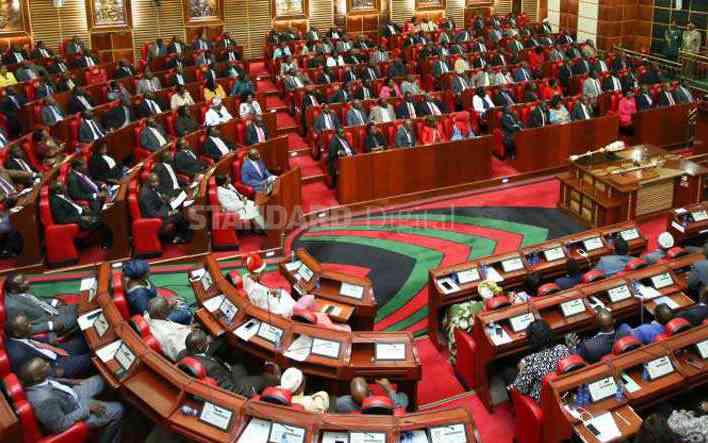
On Tuesday 14 Septmber, fuel prices went up by Sh 20. The hike happened a day after President William Ruto was sworn in as the fifth president of Kenya. The President's bold move was to remove the subsidy programme. It's no wonder it has started an intense discussion about fuel pricing in Kenya.
Unfortunately, there is a lot of fake news, misinformation and disinformation circulating about the issue of fuel prices. It is, therefore, worthwhile to explain how Kenya arrives at its petrol, diesel, and kerosene prices.
How fuel gets to Kenya
All petroleum products in Kenya are imported, almost always from the Middle East.
This is where the closest refineries (which turn crude oil into finished products) are located. At least once per month, and sometimes several times a month, the oil industry needs to buy fuel.
This is done via a government-mandated process called the Open Tender System (OTS). OTS gives all oil companies the opportunity to bid on buying and importing into Kenya all the petroleum products that the industry says they need.
This is what happens: Everyone puts in a bid and the company with the lowest price wins. They then bring in the required quantity and resell (at that same price) to all the other companies who have committed to buying the product. This means that ALL oil companies have the same cost of fuel.
The product imported needs to be paid for almost immediately as well as paying all the taxes on the product. Taxes amount to about 40 per cent of the cost to consumers of the products you buy.
Now let us debunk the myths that have been circulating around:
Myth 1: The oil industry is making a fortune on the subsidies that the government has provided for the past six months
False.
I have never heard or read anyone who makes that claim and supports it with either logic or data. The fact is the oil industry is losing a lot of money. Remember, the product has to be paid for almost as soon as it lands/arrives in Kenya, including all those taxes. That product is then sold to the consumer at a subsidised price.
The subsidy, which amounts to billions of shillings, is reimbursed to the oil industry by the government as much as 90 days later. So, the oil industry has to fund this difference either from their working capital or more usually, with a bank loan. Who pays the interest on this loan? The oil industry. The government doesn't compensate them. So the industry hates this subsidy program as it costs them billions of shillings every month.
Myth 2: Let the prices go up as this will decrease demand and less demand will mean prices will fall
False.
Kenya is not an isolated market, and the price of fuel is determined by the international market. So even if Kenyan demand declines it will have little impact on world demand, as Kenya accounts for 0.1 per cent of total world usage. In fact, world demand has been growing since the decline of the pandemic even as prices have increased by over 50 per cent.

Myth 3: The Kenyan Government can work with Saudi Arabia or UAE and buy products cheaper
In theory yes. But why would anyone sell to us for less than the going price? Just to be nice? It might be possible, but how long would it last and how much of a difference would it make? With fuel prices going up another Sh 20, Sh1 or Sh2 would have little impact.
Myth 4: The oil industry likes having prices controlled by the government
I don't think so.
I did a poll a few years ago among the major and independent oil companies; it was unanimous that no one wanted controlled prices. Why? First is that any formula will miss some cost elements. Remember the government determines the cost elements it uses in setting the price. An unintended consequence is that the industry has little incentive to reduce costs as the government will just reduce the prices to compensate.
The industry is already struggling with exchange rates. The government assumes that the US$ is worth 120-121 Kenya Shillings. And they compensate the industry on that basis (remember the millions of US $ they have to pay the supplier for the fuel they purchased). But the reality is that the shilling is really trading at 124-126 to the US $. I know this for a fact since the little company I work for sold US$ last week to a big bank for Sh124. If I sell at Sh124 you can be guaranteed that it would cost Sh125-126 or so to buy a dollar. So can you imagine being confronted with losing some 2.5 per cent in exchange losses? On a cargo worth say Sh15 billion, that amounts to Sh375 million.
Myth 5: A few prominent Kenyans control the industry and are making a huge amount of money
Unlikely.
To begin with, the oil industry doesn't make a lot of money- see Myth 4. Supporting this is that over the past 16 years four of the five major oil companies have left Kenya. Esso, Mobil, Caltex and Shell no longer directly operate in Kenya as the margins were not high enough to justify the risk of operating.
Secondly, almost 60 per cent of the Kenyan market is controlled by five companies, all of them corporations with parent companies outside Kenya, either in Europe or Africa. It is doubtful that any prominent Kenyan holds a controlling share of these international companies.
Myth 6: Kenya should have its own refinery like Uganda is going to have. That would make the price of fuel less expensive
False.
We used to have a refinery. In 2008 I calculated the cost of refining fuel in Kenya versus importing fuel. At that time, Kenya could have saved $25 million by not having the refinery. Refineries are only efficient if they can process a lot of crude. The typical size of an efficient refinery is 300,000 barrels per day. Kenya's former refinery was supposed to process 60,000 barrels per day but actually only averaged about 30,000 barrels per day.
Yes, we could build a 300,000 barrel refinery but the problem is that the entire East African fuel demand is only about 180,000 barrels per day (including Uganda which is planning to build its own). So we would have to find export markets for about 120, 000 barrels per day. That means we would have to compete with all of the Middle East Refineries that are much more efficient (many are 600, 000 barrels per day) and closer to the big demand region of Europe.
There are lots of other myths out there and most of them are looking to find a villain to blame for the fuel prices. But there are no real villains, just a market that works like all other markets based on supply and demand. We don't like it. We don't think it is fair. But life isn't fair, get used to it.
Paterson worked in the global oil industry for over 34 years. His last assignment was as Chairman and Managing Director of Mobil Oil Kenya before the Kenya operation was sold to Oil Libya.
 The Standard Group Plc is a multi-media organization with investments in media platforms spanning newspaper print
operations, television, radio broadcasting, digital and online services. The Standard Group is recognized as a
leading multi-media house in Kenya with a key influence in matters of national and international interest.
The Standard Group Plc is a multi-media organization with investments in media platforms spanning newspaper print
operations, television, radio broadcasting, digital and online services. The Standard Group is recognized as a
leading multi-media house in Kenya with a key influence in matters of national and international interest.











